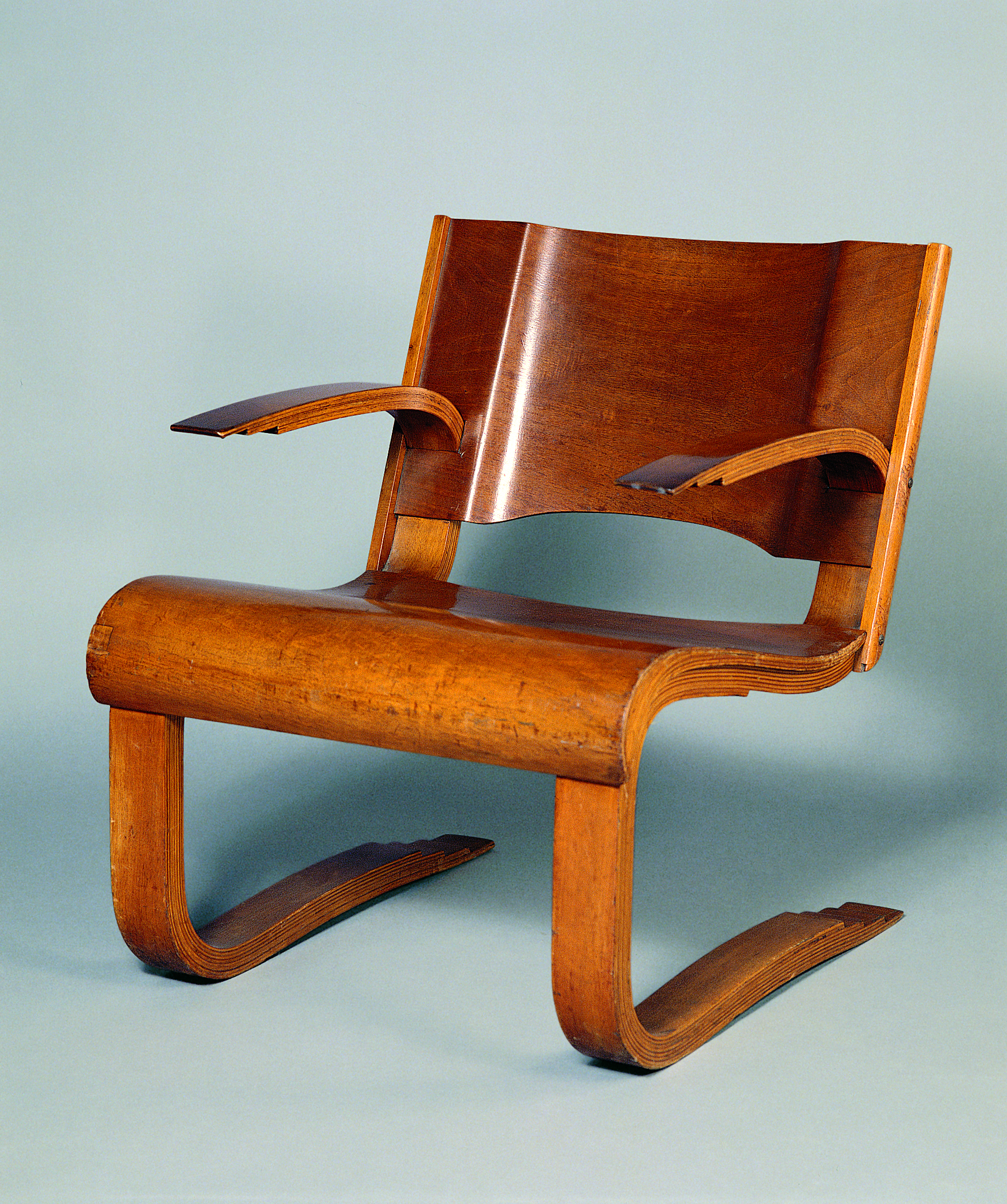
Click here to view image
Armchair for the Andrea Doria maritime station
Autorità Portuale di Genova 1998 Genova - donazione
Luigi Vietti (Novara, 1903 - Milano, 1998)
armchair
GG1998.1
Unità di misura: cm; Altezza: 72; Larghezza: 60; Profondità: 66
legno di noce lamellare curvato
Quinta Esposizione internazionale delle arti decorative e industriali moderne - Milano, Palazzo dell’Arte - 6 maggio 1933
Vietti presented at the 5th Milan Triennale in 1933 his armchair model, already used in the furnishings of the Andrea Doria maritime station in Genoa, which had been operational for a few months but was officially inaugurated on 28 October 1933. Made of curved laminated plywood, the chair was inspired by the famous cantilever chairs in birch and plywood that Finnish architect Alvar Aalto had designed starting in 1929 and which were exhibited in the Finnish section at the following Triennale in 1936. These armchairs coexisted with rationalist furniture in the living room of the flat for a family, located on the fifth floor, of the Abitazione tipica a struttura di acciaio, presented by the group of Ligurian architects led by Luigi Vietti and Luigi Carlo Daneri and including Fineschi, Zappa, Morozzo della Rocca, Vicoli, Crosa di Vergagni and Haupt. The simple, functional form and choice of material made the design of this armchair perfect for industrial mass production. This attention to new production processes characterised Vietti's overall proposal, as Luigi Carlo Daneri did not fail to emphasise: “The furniture is interesting for the presence of numerous pieces of furniture that can be dismantled and stacked, to be arranged according to the needs and wishes of the occupant; the cupboards are all of a single type for standardised production and can be both placed side by side and on top of each other”. Walnut armchair of rationalist design.




